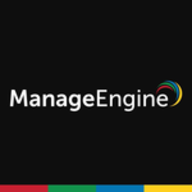


Microsoft Configuration Manager and ManageEngine OS Deployer are key players in IT system management. Microsoft Configuration Manager has the upper hand for its extensive features, allowing comprehensive management, while ManageEngine OS Deployer is preferred for simplicity and affordability.
Features: Microsoft Configuration Manager excels in software deployment, compliance settings, and security policy management. Its compatibility with other Microsoft solutions adds to its capabilities. ManageEngine OS Deployer is known for efficient OS imaging, deployment, and recovery processes, offering a straightforward method for handling operating systems.
Ease of Deployment and Customer Service: Microsoft Configuration Manager integrates seamlessly with enterprise environments but may be complex to set up. In contrast, ManageEngine OS Deployer's setup is more straightforward, favored for its imaging and deployment simplicity. Microsoft Configuration Manager offers extensive support, yet ManageEngine OS Deployer's service is noted for being more responsive and personalized.
Pricing and ROI: Microsoft Configuration Manager comes with a higher setup cost due to its extensive features, potentially offering higher long-term ROI through enterprise-level automation. ManageEngine OS Deployer is more affordable initially and delivers high ROI for small to medium-sized organizations by reducing deployment time and costs.
| Product | Market Share (%) |
|---|---|
| Microsoft Intune | 9.4% |
| Microsoft Configuration Manager | 11.5% |
| ManageEngine OS Deployer | 0.8% |
| Other | 78.3% |


| Company Size | Count |
|---|---|
| Small Business | 116 |
| Midsize Enterprise | 46 |
| Large Enterprise | 152 |
| Company Size | Count |
|---|---|
| Small Business | 20 |
| Midsize Enterprise | 13 |
| Large Enterprise | 64 |
Microsoft Intune provides centralized management of mobile devices and applications, ensuring security, compliance, and productivity through integration with Microsoft services like Microsoft 365 and Azure Active Directory.
Organizations use Intune for managing mobile devices and applications, enhancing security and compliance across platforms. With features like single sign-on, conditional access, and zero-touch deployment via Autopilot, it facilitates efficient operations. Intune's scalability, easy enrollment, and capabilities such as remote wipe support diverse device management, offering robust data protection and efficient operation. Despite its features, improvement areas include reporting, compatibility with non-Microsoft devices, and better support for macOS and Linux devices.
What are the key features of Microsoft Intune?
What benefits should users look for in reviews?
In industries such as finance, healthcare, and education, Microsoft Intune is implemented to ensure secure and compliant device management. Companies leverage its capabilities to deploy security policies and manage both corporate-owned and BYOD environments, facilitating a unified approach to data protection and compliance.
OS Deployer automates the disk imaging and deployment process. It helps administrators capture images of different OS versions and store them in a network share, to create different deployment templates for various employee roles, and deploy the images to the new systems all from a central management console. With central image capturing and deployment capabilities, OS Deployer reduces support, training and management costs by standardizing your entire organization on one or more operating systems. OS Deployer creates an exact disk image of the given system including standard configuration, operating system, configuration files and all applications that can be deployed to multiple systems simultaneously, making it ideal for rapid bare-metal provisioning. Supported OS : Windows XP, Windows 2003, Windows Vista, Windows 2008, Windows 7, Windows 8, Windows 8.1, Windows 2012, and Windows 2012 R2.
Microsoft Configuration Manager streamlines IT management with features such as software deployment, patch management, and automation, centralizing operations for Windows environments. Integration with Microsoft products allows efficient oversight of workstations and servers.
Microsoft Configuration Manager provides comprehensive IT management, offering software deployment, patch management, and application pushing. Automation reduces manual tasks, ensuring consistency across systems. Centralized management enables standardized OS deployments, application updates, and configuration integrity. Integration with Microsoft products facilitates seamless operations, while hardware and software inventory, compliance reporting, and remote control functions enhance IT management. Users seek improvements in application deployment for those without deep scripting knowledge and desire better WSUS control, PowerShell and Intune integration, Linux compatibility, and user interface enhancements. Performance improvements are requested for remote user management and third-party application support.
What features enhance Microsoft Configuration Manager?Microsoft Configuration Manager is widely implemented in organizations to manage Windows workstations and servers. It is essential for deploying operating systems and applications, managing software updates, and conducting hardware and software inventories. The tool is crucial for endpoint and configuration management, ensuring compliance, and automating processes like patching and vulnerability management. Industries such as finance, healthcare, and education rely on Microsoft Configuration Manager to keep systems secure and operational, adapting it to address their specific needs and challenges in maintaining diversified IT environments.
We monitor all Configuration Management reviews to prevent fraudulent reviews and keep review quality high. We do not post reviews by company employees or direct competitors. We validate each review for authenticity via cross-reference with LinkedIn, and personal follow-up with the reviewer when necessary.